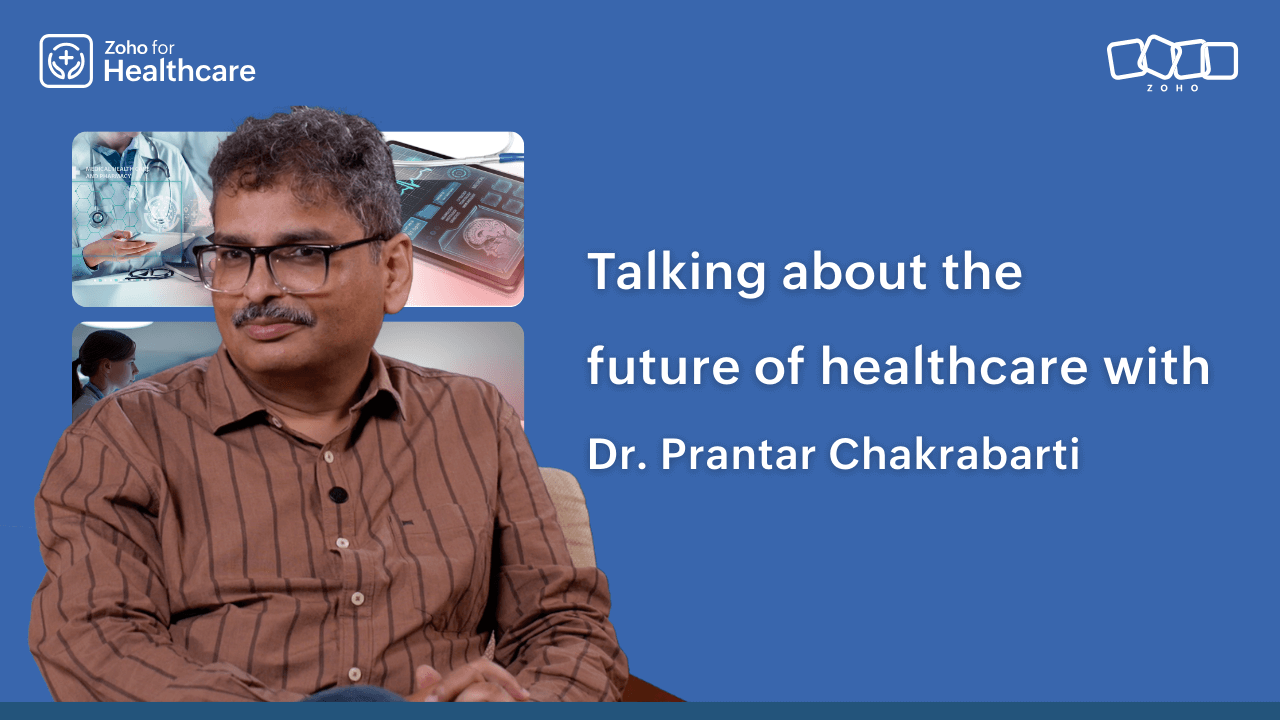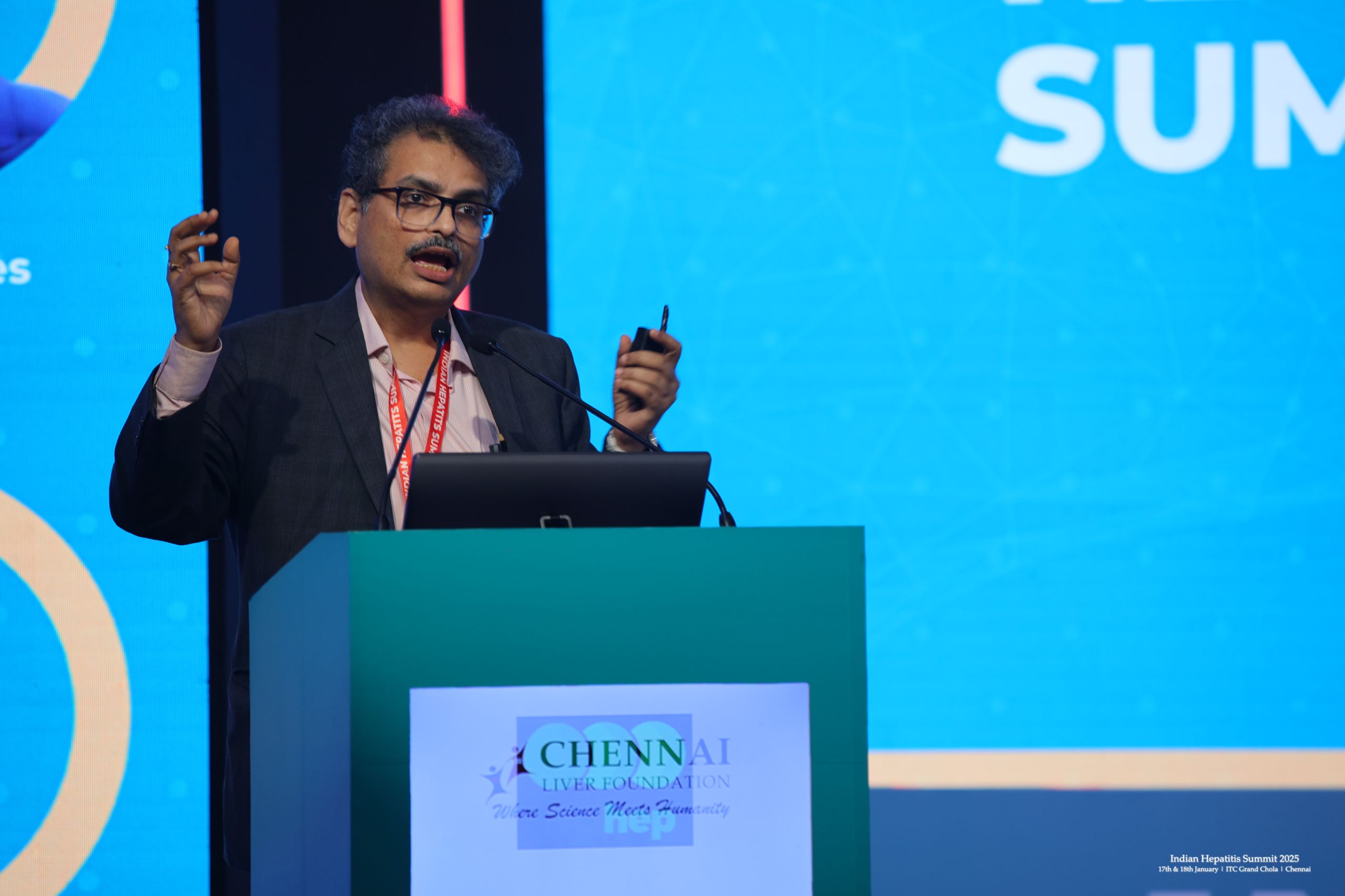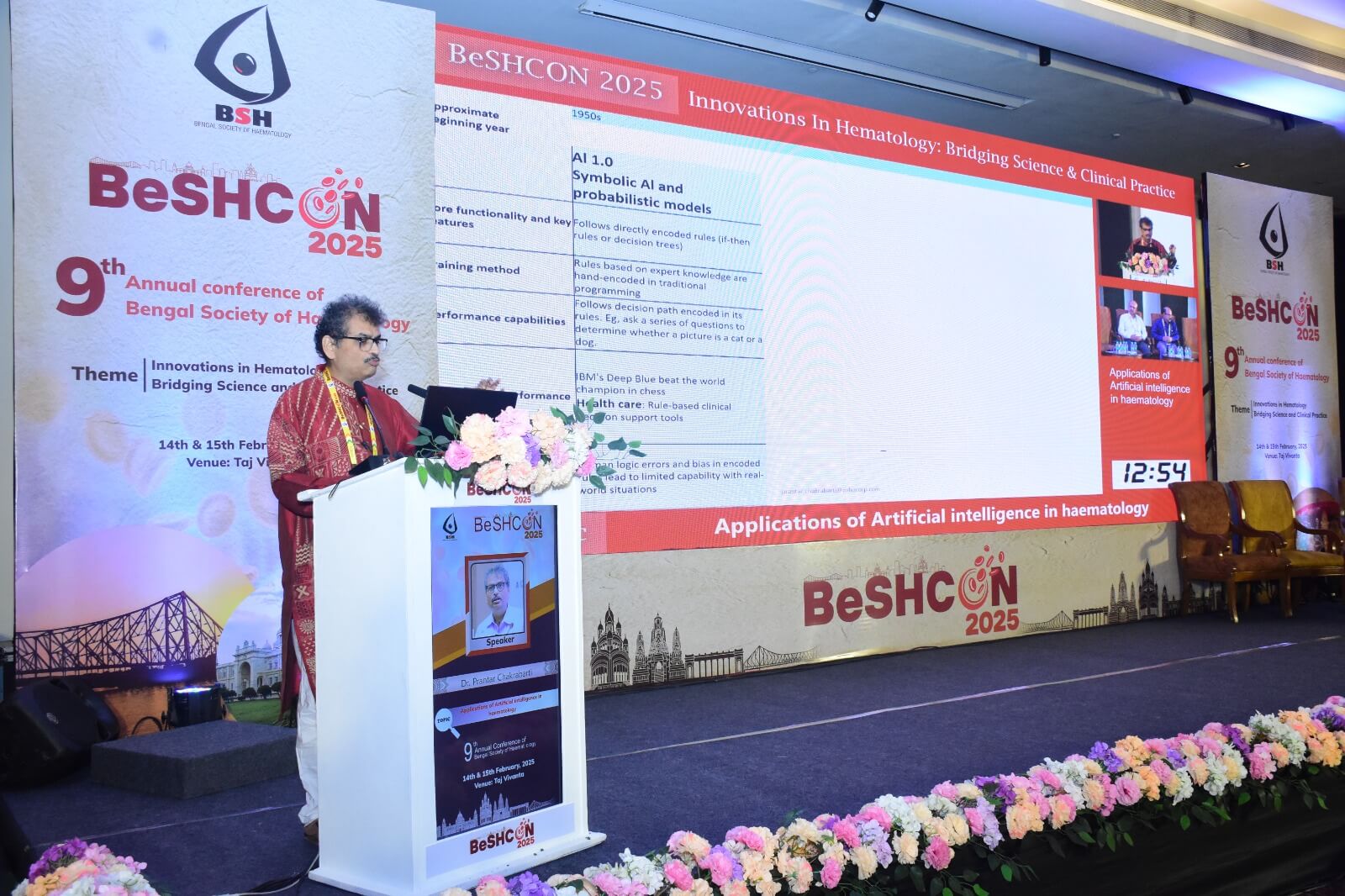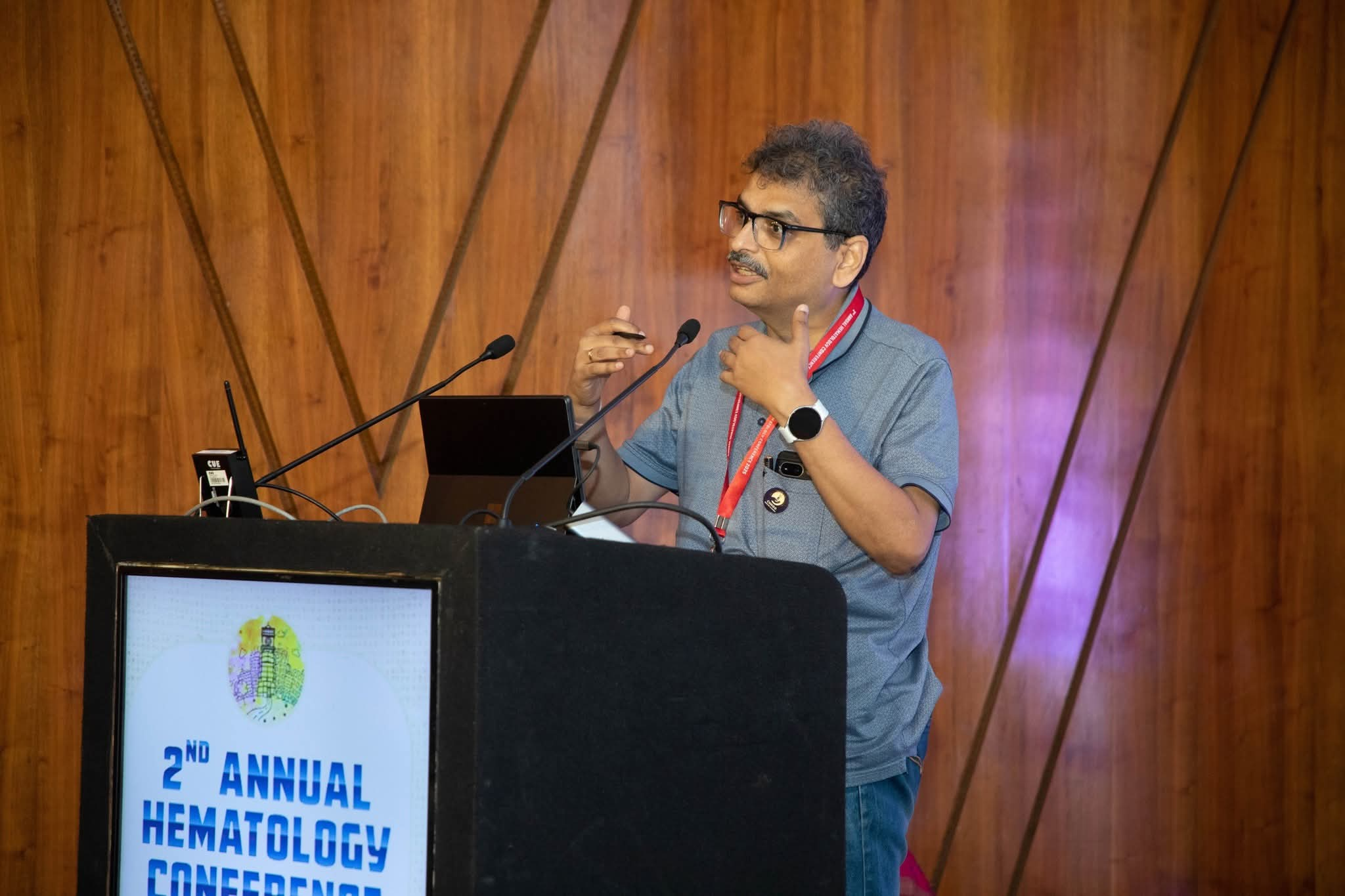- HOME
- Events and Industry News
- Talking about the future of healthcare with Dr. Prantar Chakrabarti
Talking about the future of healthcare with Dr. Prantar Chakrabarti
- Last Updated : November 21, 2025
- 124 Views
- 11 Min Read

Some stories begin with ambition, others begin with purpose. For Professor Dr. Prantar Chakrabarti, it began with a simple idea, the desire to remain independent while doing something meaningful for people. What started as a curious teenager’s dream to make a difference eventually became a lifelong journey through the worlds of medicine, teaching, and innovation.
Dr. Chakrabarti’s path has never been confined by labels. From his early fascination with physics to his decision to study medicine, from aspiring to be a surgeon to finding his true calling in haematology, every turn in his journey has been guided by curiosity and compassion. To him, medicine isn’t just a profession, it’s a way of understanding life itself.
About Dr. Prantar Chakrabarti
Prof. (Dr.) Prantar Chakrabarti, is a distinguished haematologist, academic leader, and healthcare innovator. Formerly the Head of Haematology at NRS Medical College, Kolkata, he’s now working with Zoho Corporation to develop an accessible and affordable rural healthcare model. He’s also the founder of Cybernetic Care and a Visiting Professor at Sri Sri University, Cuttack.
His passion lies in building a team of dedicated healthcare providers who deliver quality and affordable care with strong community outreach, leveraging data science and artificial intelligence through effective leadership and communication.
Key takeaways from the interview
In this interview, Dr. Chakrabarti shares his journey from medicine to digital innovation, reflecting on what inspired him to become a doctor and specialize in haematology. He discusses how his roles as clinician, teacher, and healthcare reformer intersect, and how digital health, AI, and remote monitoring are transforming patient care, especially in rural India.
Dr. Chakrabarti also speaks about Chhoo Mentor Academy, his views on government and private-sector initiatives, and the impact of the Ayushman Bharat Health Account (ABHA) in improving the continuity of care.
Through his insights, he paints a clear picture of how empathy and technology together are shaping the future of healthcare in India.
1. What inspired you to pursue a career in medicine and specialize in haematology?
“Medicine, for me, has always been about independence—the freedom to think, diagnose, and act on my own while doing what I love"
During school, I was active in debating and public speaking, but I chose medicine for the independence it offers, allowing you to do what you love while making a difference. I’ve always enjoyed science, and even now, I see the boundaries between disciplines as artificial; every field is ultimately about touching human lives.
Medical school was challenging at first, but patient interactions brought it to life. Initially drawn to surgery, I realized during my internship that I was more passionate about preparing patients for surgery than performing operations, which led me to internal medicine. Later, in haematology, I found a field where lab insights could be applied to patient care within days, offering the autonomy to think, diagnose, and act independently, a value I’ve cherished throughout my career.
2. In your roles as healthcare provider, teacher, researcher, administrator, and activist, which do you find most fulfilling, and in what ways do they feed into each other?
 “In medicine, there is no work-life balance—there is only integration. You live your work, and your work gives life meaning."
“In medicine, there is no work-life balance—there is only integration. You live your work, and your work gives life meaning."
In our country, you can’t afford to wear just one hat, we often wear ten. I’m a healthcare provider, teacher, researcher, administrator, fund generator, patient advocate, and communicator, all at once.
The most fulfilling part, though, is mentoring. When you teach and later hear that your student is doing great work and treating patients with kindness, it feels like a lasting impact, something beyond your own service.
The challenge is to remember your ikigai, your sense of purpose. Many young doctors talk about work-life balance, but in medicine, you don’t separate the two; you integrate them. It means being a healer, advocate, and community voice, while still nurturing your own well-being.
As Professor Virchow said nearly two centuries ago, ‘Medicine is a social science, and medicine at a larger level is politics.’ That means being a leader who helps shape a healthier, more mature society. And for me, that leadership begins with mentorship: it’s what brings the deepest sense of fulfilment.
3. How do digital health tools help in transforming care, education, and patient outcomes, especially in rural areas?
“Digital health isn’t just about technology—it’s about people. It bridges the distance, empowers patients, and makes healthcare more equitable."
The shift began during the COVID pandemic, when a technology university invited me to conduct webinars on digital health. As I explored the topic, I realized it wasn’t just about digitizing information but truly digitalizing healthcare, making data both machine-readable and machine-understandable.
Take a simple prescription. Most are neither legible nor structured. With technologies like natural language processing and machine learning, we can now make medical data not only readable but also capable of assisting in clinical decisions.
But digital health isn’t just about technology, it’s about people. In medicine, there’s often a ‘power distance’ between the doctor and patient, where patients accept their inferiority. True care should be co-created. Digital health helps bridge that gap by empowering patients to record their health data, use apps, and stay engaged in their care beyond clinic walls.
Some say digital health removes the human touch. I believe it extends it. For someone who must travel hundreds of kilometres just to see a doctor, technology brings care closer, making healthcare safer, more accessible, and more equitable. Ultimately, whether it’s electronic records, chatbots, or apps, the goal remains the same: to improve delivery, enhance safety, and elevate the quality of care.
4. What is Chhoo Mentor Academy? Could you share some more details about this initiative?
“This year, India will produce around 1,25,000 medical graduates, with 10,000 more seats being added soon. But the challenge isn’t just numbers, it’s all about the quality of medical education and training. We don’t have enough experienced faculty, and many graduates lack the confidence to treat even their own parents.
Medicine isn’t only about knowledge; it’s about empathy, communication, and care, skills like breaking bad news, listening patiently, and healing even when you can’t cure. Unfortunately, these aren’t given enough space in medical education in spite of recent efforts.
That’s why I started Chhoo Mentor Academy, inspired by the idea of ‘Chhoo Mantar’, a touch that transforms. It’s a learning platform to teach these human skills to everyone in healthcare: doctors, nurses, paramedics, and technicians.
Chhoo Mentor Academy aims to bring back two fundamental things:
Health: Most healthcare systems today focus only on disease. We need to focus on being healthy. I even plan to develop a course called ‘How Not to Be a Patient.’
Care: Care comes from humans. Technology can assist, but it cannot replace the human-to-human interaction or the human-to-machine interaction that is essential in healthcare.
We are addressing unmet needs by taking feedback on Twitter and other social media, and we plan to mentor people mostly online, but sometimes face-to-face.
The course will be available on the website, built using the learning management platform TrainerCentral, likely within the next six months.”
5. How do you plan to address the role of digital tools like AI or remote monitoring in improving patient outcomes in haematology?
“Learn the tech, validate it, and collaborate with developers. Only together through initiatives like Hack-o-Med (a hackathon for medicine)—we can achieve safer, better patient outcomes."
I saw a post on X by one of my juniors working with AI in radiodiagnosis. He showed that some algorithms, especially large language models, aren’t performing perfectly, but it will improve. Technology can assist us, it won’t replace us.
Take haematology, for example; most patients come through referrals, carrying what I call a Mahabharata: reports, prescriptions, and prior consultations. As a super-specialist, I’m often their last stop. Going through every paper is humanly impossible, which is where AI summarization tools can help.
AI has limitations [such as] catastrophic forgetting, hallucinations, but with trained teams, we can use it effectively. Doctors don’t need to code; they need to understand AI’s strengths, failures, and the real problems it can solve. My chatbot, for example, simply summarizes so I can spend more time with the patient.
In India, the average consultation time is less than two minutes. AI tools help us grasp patient context better, making us more human, not robotic. Deep Medicine is about using technology to become a true partner in care.
6. How do you think AI has supported the healthcare community?
“AI is a new kind of ‘friend’, non-judgmental, always available, and helpful in clinical decision-making."
Let me share my own experience. A senior government official once came to me after consulting two haematologists and several physicians. He had blood clots and 77 documents.
I always encourage patients to share their reports in advance so we can create a summary and incorporate it in an electronic medical record. Using a large language model, I generated a SOAP note (Subjective, Objective, Assessment, and Plan). Out of curiosity, I asked the model, ‘As a professor of haematology, how would you manage this patient?’
I had already made my decision, but the model’s response served as a form of validation. It reminded me of teaching OPDs, where professors and residents discuss each case together. But in a single-doctor clinic, especially with complex or rare cases, that peer discussion isn’t always possible.
Now, we have a new kind of ‘friend’, non-judgmental, always available, and helpful in decision-making. Earlier, we’d call a senior colleague for advice. Today, we can also call on AI.
7. What are the current government initiatives in India that you believe are doing well in terms of rural healthcare?
“Digital health is promising, but true impact comes when technology stays human-centered and we all play our part."
During COVID, the first step the government took was to legalize tele-consultations. Before March 2020, some considered them illegal, leading to litigation. Soon after came digital health policies, the National Digital Health Mission, and now the Ayushman Bharat Digital Mission (ABDM).
One key achievement has been raising awareness about digital health among providers and patients. Telemedicine, accelerated by the pandemic, has made care more accessible through platforms like eSanjeevani, reducing travel and waiting times.
Interoperability is another focus. Unlike some developed countries, Indian patients own their medical records, which is advantageous. The challenge is that machines don’t communicate easily, and profit-driven healthcare entities may resist sharing data. The government is addressing this by mapping providers, facilities, labs, and treatment functions.
Initiatives like ‘One India, One Identity’ and standardizing care, drugs, and clinical tools are steps forward, though challenges remain. A critical area for improvement is quality. Counting tele-consultation isn’t enough; patient outcomes and satisfaction must be prioritized.
Digital health tools should remain human-centered—used not just to treat diseases but to promote healthy lifestyles through movement, diet, and activity. Gamification could help encourage community-wide wellness.
As one villager said when I asked who the government is: ‘The postman who brought me the government letter, that’s the government.’ We are all part of it. The initiatives are promising, but collaboration and a human-centric focus are key to making a real difference.
8. What role do state governments versus the central government play in improving healthcare in rural districts like Tenkasi?
 “In places like Tenkasi, the infrastructure exists, but human resources are the bottleneck. Digital health tools can bridge the gap, making care safer and more accessible."
“In places like Tenkasi, the infrastructure exists, but human resources are the bottleneck. Digital health tools can bridge the gap, making care safer and more accessible."
A recent headline on Tenkasi highlighted a huge gap between patients and available doctors. Producing more doctors alone doesn’t solve the problem, distribution between urban and rural areas matters.
Point-of-care centres can handle initial assessments, with local health workers taking histories and performing non-invasive checks. At Tenkasi Government Hospital, MRI, ultrasound, and X-rays exist, but there’s only one radiologist—[it’s] impossible to manage everything manually.
Digital health tools can flag abnormalities, support busy professionals, and extend the reach of skilled staff. Infrastructure exists, but human resources are the bottleneck. Technology can bridge this gap, making healthcare safer and more accessible.
9. What role can Zoho for Healthcare play in addressing healthcare challenges and ensuring a smooth, data-driven patient journey across the continuum of care?
“Zoho has helped small and medium businesses thrive. In India today, it’s often easier to book a train ticket than a healthcare appointment. The focus should be on empowering patients and giving them basic awareness about what to do first.
Non-invasive monitoring using simple wearables can capture critical data. Even ASHA workers could track maternal and child health. For example, fetal heart monitoring at home could alert hospitals in real time, ensuring care is ready before the patient arrives.
Healthcare data shouldn’t remain in silos. From blood pressure to medications, continuous monitoring can feed a data-driven ecosystem. Registration, referrals, ICU triage, and post-discharge care should all be seamless. Intelligent systems can filter alarms, prioritize critical cases, and coordinate care efficiently.
Zoho for Healthcare can integrate all these touchpoints: appointments, treatments, referrals, [and] home care, creating a smooth, patient-centric journey. The sky isn’t the limit; real-world collaboration and smart solutions can transform healthcare for 1.4 billion Indians.”
10. Where do you see the private sector creating the greatest disruption and value within the digital health ecosystem over the next five years?
“End-to-end care, empowered patients, and problem-focused solutions, that’s the future of healthcare."
The private sector must remember [that] science is the product, money is the by-product. Over the next five years, ABDM, its marketplace, and apps will grow but adoption depends on usability, not blame. Continuity of care should follow patients across cities, capturing their journey end-to-end. Solve problems step by step, not force solutions, and use digital tools to keep workforces healthy. With government initiatives like ABDM, the goal is clear: No one should be denied basic care, and everyone should know what to do next.
11. How do you see ABHA changing the way healthcare is delivered in India? How can it benefit patients and improve continuity of care from a doctor’s perspective?
“ABHA IDs can make healthcare as seamless as Aadhaar Id and UPI—bringing care, prevention, and wellness to everyone, everywhere."
Just as Aadhaar and UPI transformed identity and payments, ABHA IDs can revolutionize healthcare. With point-of-care devices and support from ASHA workers, rural patients can access tele-consultations, diagnostics, and essential medicines, reducing the burden on overcrowded city hospitals.
ABHA can also encourage preventive care and healthier lifestyles by incentivising habits like daily activity. By connecting technology with human behaviour, ABHA has the power to make healthcare more accessible, efficient, and proactive for all.
From a doctor’s perspective, when a patient arrives after consulting other institutions, having access to their previous tests and treatments enables better-informed decisions. Likewise, if I record my recommendations, the next doctor gains valuable insight. This digital flow of medical wisdom replaces fragile handwritten records and ensures continuity of care.
A smooth patient journey makes healthcare seamless, not a battle. Just as we build expressways and Vande Bharat trains, we can create a ‘Health Jatra’, a barrier-free, efficient, and patient-centric experience. Challenges like patient volume and limited skilled professionals will remain, but digital tools can help bridge the gap.
12. What trends do you think will define the next decade of healthcare in India?
“Healthcare in India is ready to leapfrog. We must address our unique challenges, adapt technology for our people, and ensure everyone contributes to a healthier, happier nation"
The next decade belongs to healthcare. Unlike finance and education, healthcare hasn’t been disrupted yet, but it’s time to leapfrog. India has its own unique challenges, and we must solve them in our own way. You can borrow ideas from other systems, but you cannot blindly adopt them. If we want to make India healthy and happy, everyone has to contribute. The technology framework already exists but the technology must be customized for India, by Indians.”
13. How will AI and machine learning change patient care, and what guidance would you offer future doctors?
 “AI can’t replace doctors, it can only empower those who understand it."
“AI can’t replace doctors, it can only empower those who understand it."
AI in healthcare is advancing rapidly, but its effectiveness depends on context. Tools developed abroad may not suit India’s diverse population. AI cannot replace humans, it won’t prescribe or sign reports. Dangerous black box systems must be avoided; transparency, responsibility, and safety are essential, and users must understand the AI they employ.
That’s why we have launched the Indian College of Artificial Intelligence in Medicine (ICAIM) ensuring medical professionals are AI and digitally literate, so they stay in control and deliver safe, effective care.
Doctors can’t afford to close their eyes to AI. It has already arrived. Engage with it, experiment with it, and learn to work alongside it. Doctors must take on the leadership and act as referees who modulate, modify, and use AI to improve productivity, enhance patient care, and make everyone healthier and happier, rather than creating chaos or stress.
Conclusion
From a curious teenager fascinated by science to a pioneering haematologist and digital health innovator, Dr. Prantar Chakrabarti’s journey is a story of curiosity, compassion, and vision. He believes medicine and healthcare innovation are not just professions, they are human-centered missions where empathy, technology, and digital health work hand in hand.
Through initiatives like Chhoo Mentor Academy, his work with Zoho, and advocacy for ABHA, he aims to make healthcare seamless, preventive, and data-driven. He focuses on bridging gaps between rural and urban care while empowering doctors with AI in medicine and healthcare technology.
AI won’t replace doctors, but doctors who use AI will define the future. His advice to the next generation is clear: Embrace digital health tools, lead responsibly, and never lose sight of the human at the centre of care. With curiosity, collaboration, and smart use of AI, India’s healthcare future can be transformative, inclusive, and life-changing for crores of people.
To learn more about this interview, click the link: https://youtu.be/EieWe6Urexs


